In a Rush?
This is how Devialet marry form and function at a glance:
- Harry F Olson’s Pulsating Sphere inspired Active Cospherical Engine (ACE) technology
- Phantom’s tweeter grille, inspired by Chladni patterns and French formal gardens, is poetic yet practical
- Pulsating push-push woofers visually and audibly communicate infrasonic bass
- Devialet Mania is highly portable despite the challenges associated with spherical speaker design
Form vs Function in Design
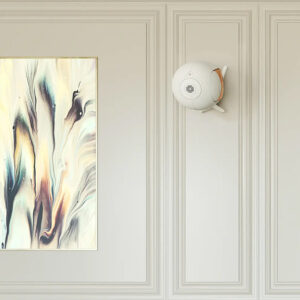
Picture: Devialet Phantom speaker with the gecko wall mount
Let’s start with a little context before diving into Devialet’s speaker design…
For centuries, the design world has grappled with the delicate balance between form and function. At various points in design history, this balance tilted in favour of one or the other, for example, with Rococo and Victorian-era fashions.
Since 1896, however, designers have largely looked to Louis H. Sullivan’s seminal essay ‘The Tall Office Building Artistically Considered’, in which the famous axiom “form follows function” was coined. In essence, this means aesthetic qualities (of a building or object) should be derived from the intended function, rather than for the sake of ornamentation or historical precedent.
One of Sullivan’s mentees and the architect behind New York’s famous Guggenheim Museum, Frank Lloyd Wright, amended this axiom to “form and function are one”. And judging by today’s most successful designs, an amalgamation of both elements certainly seems advantageous.
Form and Function at Devialet
How, then, does Devialet manage this binary in their speaker design?
While the unique, almost extra-terrestrial look of Devialet’s Phantom speakers suggests an emphasis on form, the brand’s design process is, in fact, an iterative one involving both acoustic engineers and designers. Such a team ensures that each Devialet speaker is simultaneously aesthetic and practical.
To trace how both formal and functional elements contribute to the success of Devialet speakers, let’s look at the significant influences behind their work. In doing so, we’ll see how aesthetic decisions never detract from the speakers’ primary functions.
Devialet’s Formal Design Influences
Harry F. Olson’s Pulsating Sphere
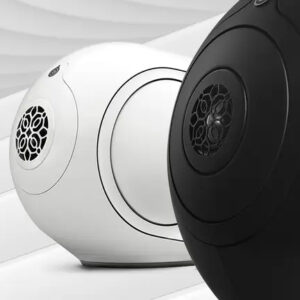
Picture: Devialet Phantom II speakers in black and white finishes
Devialet’s speakers—particularly the quasi-spherical Phantoms—are formally influenced by Harry F Olson’s early research into pulsating spheres and his subsequent development of an electro-acoustic transducer in the 1930s.
Olson’s device consisted of a hollow metal sphere with a small hole connected to an electronic amplifier. This sphere would vibrate in response to the amplifier’s electrical signals and produce audible sound waves—a breakthrough for the development of modern speakers.
While Olson’s device was a far cry from the efficiency and complexity of today’s speakers, it visualised the ideal acoustic source in a spherical form. Nowadays, designing a spherical speaker is a much greater challenge. Traditional speaker components are designed to fit within flat, rectangular, or prismatic chassis—not entirely curved ones like Olson’s.
As well as being like a game of Tetris on hard mode, designing a spherical speaker presents unique acoustic challenges. These include standing waves, diffraction, and unpredictable sonic reflections which lead to phase cancellation and comb-filtering effects.
Despite these challenges, Olson’s work demonstrated how curved forms could facilitate omnidirectional sound, reduce distortion, and create a more natural soundstage. To Devialet, and other brands (like Elipson and Bowers & Wilkins) who have successfully tackled the challenges of curvature, such benefits are well worth the extra cost and effort.
By selecting a quasi-spherical shape for their Phantom and Mania speakers, Devialet demonstrates how visual characteristics can give rise to fantastic functional outcomes. The Active Cospherical Engine (ACE) technology of Devialet’s Phantom speakers is proof of this.
Chladni Patterns
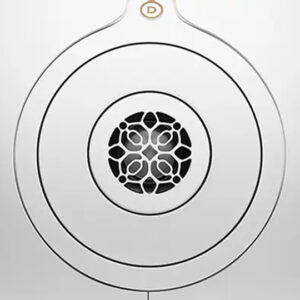
Picture: Tweeter grille of Devialet Phantom, inspired by Chladni patterns and French formal gardens
In another beautiful nod to the history of acoustic physics, Devialet incorporates the discoveries of 18th-century physicist, Ernst Chladni, into the decorative details of their Phantom speakers.
Chladni patterns have been studied extensively in physics and acoustics and are used to understand the behaviour of vibrating systems through visual means. They are commonly used in the study of earthquakes and natural phenomena as well as in the design and testing of musical instruments and loudspeakers. Therefore, they make a fitting and highly creative addition to the aesthetic features of Devialet speakers.
But how exactly do Chladni patterns feature in the design of Devialet speakers? Besides being used to inform the best placement and sizing of speaker components within an enclosure, Devialet visually represents a Chladni pattern on the tweeter grille of the Phantom speakers.
The intricate and ornate grille sees form and function harmoniously intertwined to create something that’s simultaneously exquisite and sturdy enough to protect the delicate tweeter membrane behind.
Eighteenth-Century Formal Gardens
As well as Chladni patterns, another inspiration behind the Phantom speaker’s ornate tweeter grille was the French formal garden—especially those grand and symmetrical examples of the eighteenth century.
Take the elaborate formal gardens at the Palace of Versailles as a point of reference for this lavish aesthetic.
While designs of eighteenth-century France were primarily guided by form, Devialet speakers are informed by both form and function. Through intertwining visual and inspirations with functional aspirations, Devialet successfully pay homage to their French culture both poetically and practically.

Product Breakdown
Now that we’ve seen how much thought and creativity goes into a Devialet speaker’s design, let’s look at what unique technological specifications set them apart.
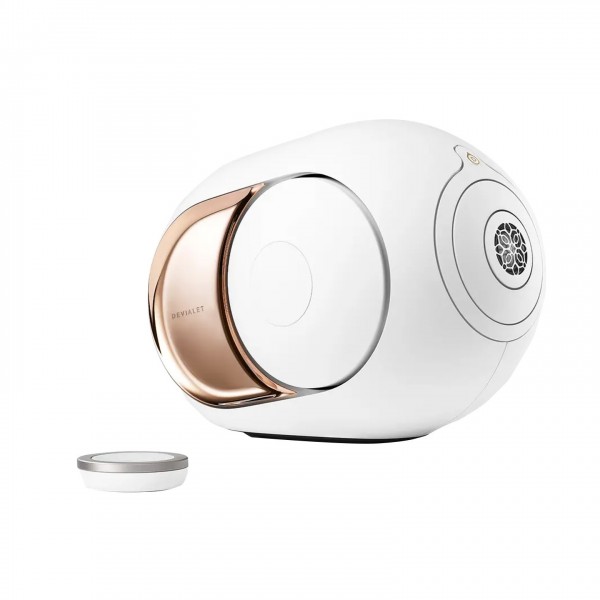
Phantom I
The Phantom I is Devialet’s highest-spec speaker. It’s packed with proprietary technologies, futuristic features, and reproduces some of the deepest bass imaginable.
- Wi-Fi and Bluetooth with AirPlay 2 compatibility
- 103 dB and 108 dB models in Light Chrome, Matte Black, 22 Karat Rose Gold, and Moongold Opéra de Paris finishes
- 500 Watts RMS (103dB) and 1100-Watt RMS (108dB) amplification power
- Exclusive Heart Bass Implosion (HBI®) reaches infrasonic bass frequencies of 16Hz (103dB) and 14Hz (108dB)
- Single chip Intelligence Processor with SAM®, ADH®, Magic Wire, Class A, and DAC
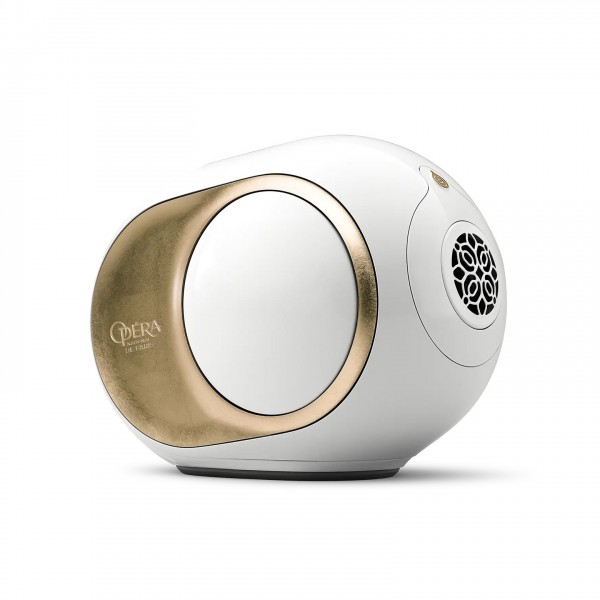
Phantom II
The Phantom II wireless speaker from Devialet is very similar to the Phantom I in terms of appearance and processor technologies. The key differences between Phantom I and Phantom II come down to size and power. Devialet Phantom II’s key features include:
- Wi-Fi and Bluetooth with AirPlay 2 compatibility
- Available in 95 dB and 98 dB models with Iconic White, Matte Black, and Moongold Opéra de Paris finishes
- 350 Watts RMS (95dB) and 400 Watts RMS (98dB) amplification power
- Exclusive Heart Bass Implosion (HBI®) reaches an infrasonic 18Hz (95 and 98dB)
- Single chip Intelligence Processor with SAM®, ADH®, Magic Wire, Class A, and DAC
Devialet has described their Phantom speakers in one word: Implosive. To elaborate, the Phantom I and II speakers, used alone or in stereo, reach infrasonic levels of bass. This extraordinarily deep bass eliminates the need for additional subwoofers, meaning you can have a full home theatre using Devialet speakers alone. Their pulsating push-push woofers make the infrasonic drama a visual—as well as an audible—spectacle.
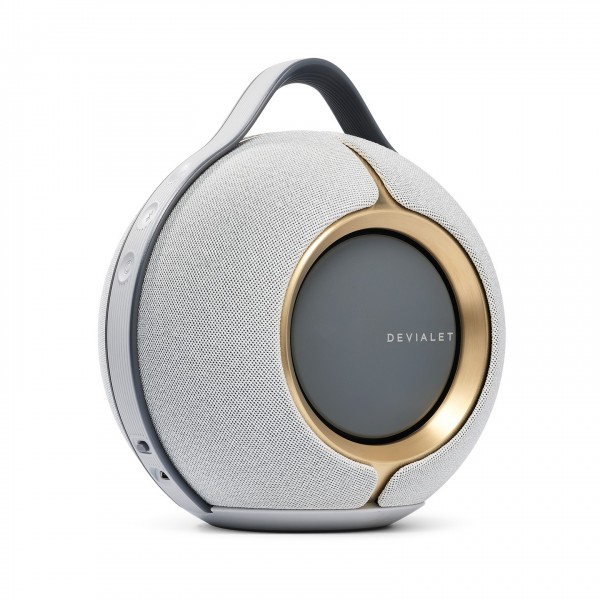
Mania
Mania is Devialet’s portable Bluetooth speaker, ideal for taking with you around the house, or even to the garden or beach.
Devialet Mania’s key features include:
- Portable size and ergonomic carrying handle
- Up to 10 hours of battery life
- IPX4 water resistance
- Frequency range of 30 – 20,000 Hz
- Cross-stereo architecture for 360° sound delivery
Mania’s primary characteristic and unique selling point is portability. It achieves this despite having a challenging spherical form. In such a compact and portable unit, four drivers and two push-push woofers ensure stereo sound reaches you across a full 360° soundstage. All the while, Devialet’s proprietary ASC and SAM® technologies adapt and render sound signals for optimal output.
Who Uses Devialet Speakers
In case Devialet’s marriage of cleverly informed, futuristic aesthetics and technologies hasn’t won you over yet, let’s go back to the basics.
What if I told you about some of the creative and industrious minds which have already demonstrated their passion for Devialet speakers?
While it is difficult to know exactly who uses Devialet speakers, several notable individuals have publicly expressed their admiration for the brand. A few other famous figures and businesses have even been spotted using Devialet products…
Jay Z
One of the celebrities who reportedly uses Devialet speakers is rapper and producer Jay-Z. Z’s entertainment company, Roc Nation not only purchased from Devialet but invested in the brand. Z did so alongside electronics giant Foxconn, French car manufacturer Renault, and Playground Global—the investment company founded by Andy Rubin, pioneer of Google’s Android mobile operating system.
Such investments from across the auto, electronics, venture capital, and record industries are a testament to the broad applicability and professional quality of Devialet’s speakers.
Karl Lagerfeld
Others who have purchased Devialet speakers include the late fashion designer Karl Lagerfeld. With his exceptional eye for design, the highly unique Phantom speakers demanded his attention. He is said to have purchased 20 of his own Phantoms during the first limited edition drop by the company.
Emmanuel Macron
According to photos posted to Twitter by French President Emmanuel Macron, Devialet Phantom speakers take pride of place amongst the nation’s most crucial resources. The speakers can be seen placed on a desk facing the room’s primary conference table. What better example could you want for the applicability of Devialet speakers in an office environment?
Audiophiles
As well as these influential figures, Devialet speakers are a popular choice among audiophiles and music enthusiasts worldwide. The ability to purchase Phantoms in pairs or to upgrade to a comprehensive home theatre makes them an attractive option to outfit an entire home, cinema, or studio with.
Professionals
You’ll also find Phantom I and Phantom II speakers in professional settings such as hospitality, retail, fitness, and—as witnessed in the case of Emmanuel Macron—office spaces.
The Phantom speakers can be easily wall- or stand-mounted to suit different room types and scenarios. For example, in restaurants and cafes where people come and go all day long, wall-mounting some Phantom speakers keeps them safely out of reach and frees up floor space.
Alternatively, tripod speaker stands for Phantom create a greater statement, ideal for luxurious hotel rooms or Airbnbs.
Shop Gecko Wall Mount
Final Thoughts
The purpose of this article was to take a closer look at how, and to what extent, form and function informed the design of Devialet speakers.
By looking at the brand’s aesthetic influences and assessing how they each serve functional as well as visual objectives, we establish a harmony in the company’s design journey.
Not only do their Phantom and Mania speakers look interesting with their quasi-spherical forms and ornate detailing, but they also successfully fulfil functional design objectives. They deliver sound of an unbelievable quality with bass capabilities negating the need for external subwoofers and SAM® technology aligning recorded signals with loudspeaker acoustic pressure.
While some manufacturers may sink their design efforts into functionality, and others use exotic designs to mask less advanced technological specifications, Devialet is one of the brands balancing both beauty and brains.

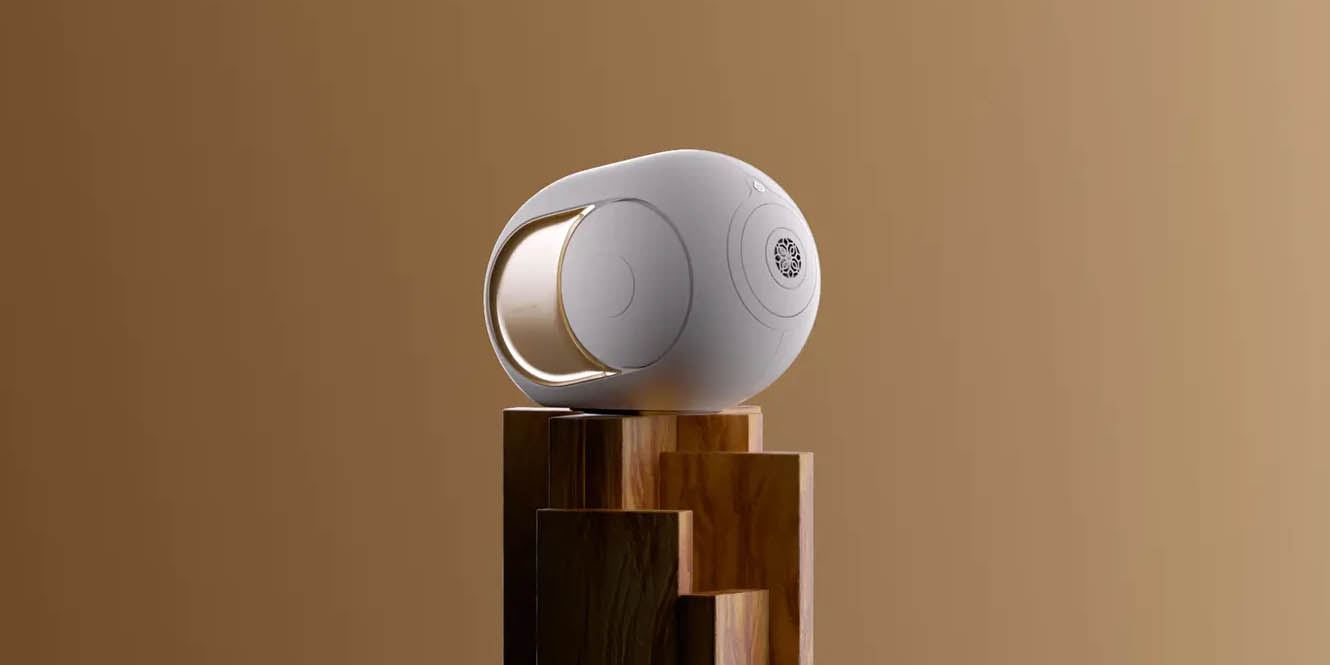
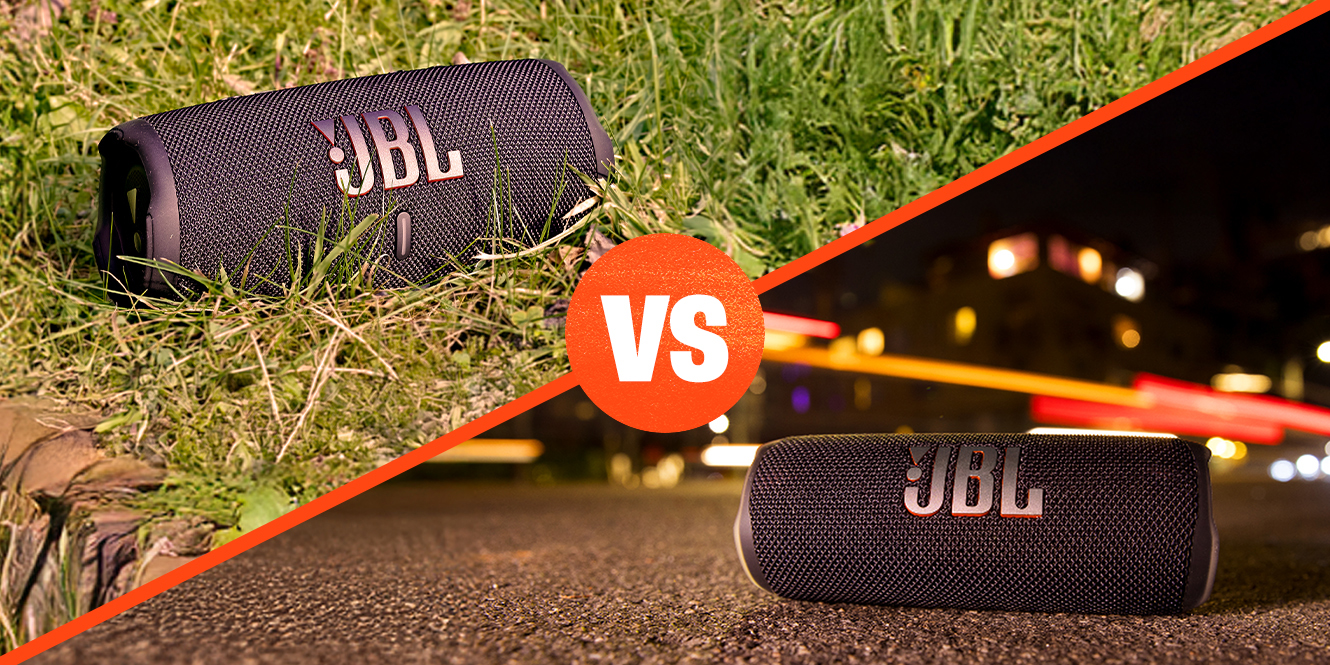



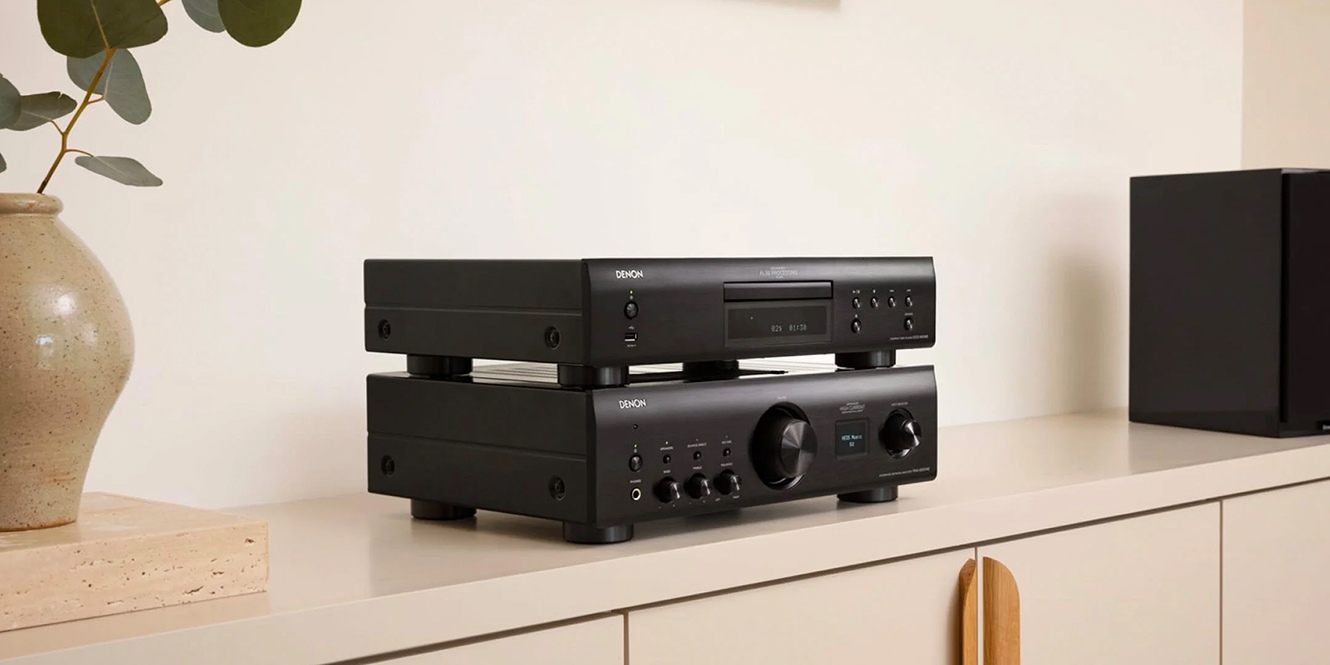



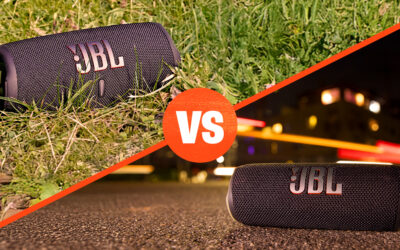
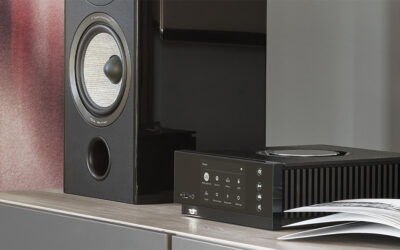

0 Comments